Broadening Participation in Computing Through Cultivating Teacher Professional Growth: Stories from Teachers of Color
Abstract
1. Introduction
2. Literature Review
2.1. Prior Work on CS PD in K-12
2.2. Teachers of Color in K-12 CS Education
3. Theoretical Framework
4. Method
4.1. Professional Development Implementation and Revision
4.2. Participants
4.3. Data Collection and Analysis
5. Results
“We have Caucasians and then we have Hispanics [in my classroom]. And so, … just like I want my African American students to be able to relate, [I want] all my other students to be able to relate as well…you’ve got to make it [curriculum] relate. You know, you want them to read and see things that they can relate to. You want them to see characters that look like them, that they can relate to”.
“[O]ur very first story was about a Hispanic family that was in America and how they, [when] it was Thanksgiving time…one of the children wanted to… follow American tradition for Thanksgiving and [discuss] how it was different from their family”.
“I had some students who were from a Muslim background and … I made certain that any snacks that came into the classroom that they did not contain any pork or pork fry products…just making sure that you are aware of the different cultural aspects because everyone celebrates things differently and some students don’t celebrate the same holidays that we celebrate…you kind of dig into the students backgrounds to make sure that you are not, you know, being offensive in any way”.
“They’re seeing it [learning problem] like real life and they’re being the ones to change it. So, they feel like they even have a bigger role now versus just being a student…They get a chance to swap roles and like, hey, OK, I get a chance to be in charge… So, CS is a great motivator and influencer for the students and myself”.
6. Discussion
6.1. Interpreting the Teachers’ Growth in the Four Domains of the Professional Growth Model
6.2. Insights from Working with Teachers of Color
6.3. Broadening Participation in CS as a Result of Supporting Teachers of Color
7. Conclusions
8. Limitations
Author Contributions
Funding
Institutional Review Board Statement
Informed Consent Statement
Data Availability Statement
Conflicts of Interest
References
- Blazar, D. (2021). Teachers of color, culturally responsive teaching, and student outcomes: Experimental evidence from the random assignment of teachers to classes (Ed Working Paper No. 21-501). Annenberg Institute for School Reform at Brown University. [Google Scholar]
- Borowczak, M., & Burrows, A. C. (2019). Ants go marching—Integrating computer science into teacher professional development with NetLogo. Education Sciences, 9(1), 66. [Google Scholar] [CrossRef]
- Borrero, N. E., Flores, E., & de la Cruz, G. (2016). Developing and enacting culturally relevant pedagogy: Voices of new teachers of color. Equity & Excellence in Education, 49(1), 27–40. [Google Scholar]
- Boud, D., Keogh, R., & Walker, D. (2013). Reflection: Turning experience into learning. Routledge. [Google Scholar]
- Burciaga, R., & Kohli, R. (2018). Disrupting whitestream measures of quality teaching: The community cultural wealth of teachers of color. Multicultural Perspectives, 20(1), 5–12. [Google Scholar] [CrossRef]
- Chang, B. (2019). Reflection in learning. Online Learning, 23(1), 95–110. [Google Scholar] [CrossRef]
- Cherry-McDaniel, M. (2019). Skinfolk ain’t always kinfolk: The dangers of assuming and assigning inherent cultural responsiveness to teachers of color. Educational Studies, 55(2), 241–251. [Google Scholar] [CrossRef]
- Clarke, D., & Hollingsworth, H. (2002). Elaborating a model of teacher professional growth. Teaching and Teacher Education, 18(8), 947–967. [Google Scholar] [CrossRef]
- Darling-Hammond, L., Hyler, M. E., & Gardner, M. (2017). Effective teacher professional development. Learning Policy Institute. [Google Scholar]
- Dong, Y., Cateté, V., Lytle, N., Isvik, A., Barnes, T., Jocius, R., Albert, J., Joshi, D., Robinson, R., & Andrews, A. (2019, July 15–17). Infusing computing: Analyzing teacher programming products in k-12 computational thinking professional development. 2019 ACM Conference on Innovation and Technology in Computer Science Education (pp. 278–284), Aberdeen, UK. [Google Scholar]
- Duquette, C. (2022). Finding a place for every student: Inclusive practices, social belonging, and differentiated instruction in elementary classrooms. Pembroke Publishers Limited. [Google Scholar]
- Fram, S. M. (2013). The constant comparative analysis method outside of grounded theory. The Qualitative Report, 18(1), 1–25. [Google Scholar] [CrossRef]
- Friend, M., Twarek, B., Koontz, J., Bell, A., & Joseph, A. (2022). Trends in CS teacher professional development: A report from the CSTA PD committee. In Proceedings of the 53rd ACM Technical Symposium on Computer Science Education-Volume 1 (pp. 390–396). ACM. [Google Scholar]
- Gay, G. (2018). Culturally responsive teaching: Theory, research, and practice. Teachers College Press. [Google Scholar]
- Ghaye, T. (2010). Teaching and learning through reflective practice: A practical guide for positive action. Routledge. [Google Scholar]
- Gist, C. D. (2017). Culturally responsive pedagogy for teachers of color. The New Educator, 13(3), 288–303. [Google Scholar] [CrossRef]
- Glaser, B. G. (1965). The constant comparative method of qualitative analysis. Social Problems, 12(4), 436–445. [Google Scholar] [CrossRef]
- Goode, J., Ivey, A., Johnson, S. R., Ryoo, J. J., & Ong, C. (2021). Rac(e)ing to computer science for all: How teachers talk and learn about equity in professional development. Computer Science Education, 31(3), 374–399. [Google Scholar] [CrossRef]
- Goodwin, A. L. (2004). Exploring the perspectives of teacher educators of color: What do they bring to teacher education? Issues in Teacher Education, 13(2), 7–24. [Google Scholar]
- Gray, J., Haynie, K., Packman, S., Boehm, M., Crawford, C., & Muralidhar, D. (2015, March 4–7). A mid-project report on a statewide professional development model for CS principles. 46th ACM Technical Symposium on Computer Science Education (pp. 380–385), Kansas City, MO, USA. [Google Scholar]
- Haddix, M. M. (2017). Diversifying teaching and teacher education: Beyond rhetoric and toward real change. Journal of Literacy Research, 49(1), 141–149. [Google Scholar] [CrossRef]
- Hestness, E., Ketelhut, D. J., McGinnis, J. R., & Plane, J. (2018). Professional knowledge building within an elementary teacher professional development experience on computational thinking in science education. Journal of Technology and Teacher Education, 26(3), 411–435. [Google Scholar]
- Horn, N. (2011, March 18–22). Curriculum orientation of virtual teachers: A basic interpretive study of secondary teachers’ development of curriculum orientations. Society for Information Technology & Teacher Education International Conference (pp. 1857–1860), Las Vegas, NV, USA. [Google Scholar]
- Howard, T. C. (2021). Culturally responsive pedagogy. In Transforming multicultural education policy and practice: Expanding educational opportunity (pp. 137–163). Teachers College Press. [Google Scholar]
- Israel, M., Liu, R., Yan, W., Sherwood, H., Martin, W., Fancsali, C., Rivera-Cash, E., & Adair, A. (2022). Understanding barriers to school-wide computational thinking integration at the elementary grades: Lessons from three schools. In Computational thinking in PreK-5: Empirical evidence for integration and future directions (pp. 64–71). Association for Computing Machinery. [Google Scholar]
- Jocius, R., Joshi, D., Dong, Y., Robinson, R., Cateté, V., Barnes, T., Albert, J., Andrews, A., & Lytle, N. (2020, February 27–March 2). Code, connect, create: The 3c professional development model to support computational thinking infusion. 51st ACM Technical Symposium on Computer Science Education (pp. 971–977), Minneapolis, MN, USA. [Google Scholar]
- Ketelhut, D. J., Mills, K., Hestness, E., Cabrera, L., Plane, J., & McGinnis, J. R. (2020). Teacher change following a professional development experience in integrating computational thinking into elementary science. Journal of Science Education and Technology, 29, 174–188. [Google Scholar] [CrossRef]
- Kohli, R. (2019). Lessons for teacher education: The role of critical professional development in teacher of color retention. Journal of Teacher Education, 70(1), 39–50. [Google Scholar] [CrossRef]
- Kong, S. C., & Lai, M. (2023). Effects of a teacher development program on teachers’ knowledge and collaborative engagement, and students’ achievement in computational thinking concepts. British Journal of Educational Technology, 54(2), 489–512. [Google Scholar] [CrossRef]
- Lee, I., Martin, F., Denner, J., Coulter, B., Allan, W., Erickson, J., Malyn-Smith, J., & Werner, L. (2011). Computational thinking for youth in practice. ACM Inroads, 2(1), 32–37. [Google Scholar]
- Leonard, J., Mitchell, M., Barnes-Johnson, J., Unertl, A., Outka-Hill, J., Robinson, R., & Hester-Croff, C. (2018). Preparing teachers to engage rural students in computational thinking through robotics, game design, and culturally responsive teaching. Journal of Teacher Education, 69(4), 386–407. [Google Scholar] [CrossRef]
- Leyzberg, D., & Moretti, C. (2017, March 8–11). Teaching CS to CS teachers: Addressing the need for advanced content in K-12 professional development. 2017 ACM SIGCSE Technical Symposium on Computer Science Education (pp. 369–374), Seattle, WA, USA. [Google Scholar]
- Luo, F., Antonenko, P. D., & Davis, E. C. (2020a). Exploring the evolution of two girls’ conceptions and practices in computational thinking in science. Computers & Education, 146, 103759. [Google Scholar]
- Luo, F., Ijeluola, S. A., Westerlund, J., Walker, A., Denham, A., Walker, J., & Young, C. (2023). Supporting elementary teachers’ technological, pedagogical, and content knowledge in computational thinking integration. Journal of Science Education and Technology, 32(4), 583–596. [Google Scholar] [CrossRef]
- Luo, F., Israel, M., & Gane, B. (2022a). Elementary computational thinking instruction and assessment: A learning trajectory perspective. ACM Transactions on Computing Education (TOCE), 22(2), 1–26. [Google Scholar]
- Luo, F., Israel, M., Liu, R., Yan, W., Gane, B., & Hampton, J. (2020b). Understanding students’ computational thinking through cognitive interviews: A learning trajectory-based analysis. In Proceedings of the 51st ACM technical symposium on computer science education (pp. 919–925). ACM. [Google Scholar]
- Luo, F., Liu, R., Awoyemi, I. D., Crawford, C., & Nasrin, F. (2024). Novel insights into elementary girls’ experiences in physiological computing. In Proceedings of the 55th ACM Technical Symposium on Computer Science Education V. 1 (pp. 764–770). ACM. [Google Scholar]
- Luo, F., Yan, W., Liu, R., & Israel, M. (2022b). Elementary students’ understanding of variables in computational thinking-integrated instruction: A mixed methods study. In Proceedings of the 53rd ACM Technical Symposium on Computer Science Education-Volume 1 (pp. 523–529). ACM. [Google Scholar]
- Merriam, S. B., & Tisdell, E. J. (2015). Qualitative research: A guide to design and implementation. John Wiley & Sons. [Google Scholar]
- Milliken, A., Cody, C., Catete, V., & Barnes, T. (2019, July 15–17). Effective computer science teacher professional development: Beauty and joy of computing 2018. 2019 ACM Conference on Innovation and Technology in Computer Science Education (pp. 271–277), Aberdeen, UK. [Google Scholar]
- Moudgalya, S. K., Lachney, M., Yadav, A., & Allen Kuyenga, M. (2024). What does the phrase “diverse students” mean? An exploration of CS teachers’ ideas of race, culture, and community in their classrooms. Computer Science Education, 35, 292–320. [Google Scholar] [CrossRef]
- Nakajima, T. M., & Goode, J. (2019). Transformative learning for computer science teachers: Examining how educators learn e-textiles in professional development. Teaching and Teacher Education, 85, 148–159. [Google Scholar] [CrossRef]
- Navarro, O., Quince, C. L., Hsieh, B., & Deckman, S. L. (2019). Transforming teacher education by integrating the funds of knowledge of teachers of color. Review of Education, Pedagogy, and Cultural Studies, 41(4–5), 282–316. [Google Scholar] [CrossRef]
- Ottenbreit-Leftwich, A., & Yadav, A. (2022). Computational thinking in prek-5: Empirical evidence for integration and future directions. ACM. [Google Scholar]
- Qian, Y., Hambrusch, S., Yadav, A., & Gretter, S. (2018). Who needs what: Recommendations for designing effective online professional development for computer science teachers. Journal of Research on Technology in Education, 50(2), 164–181. [Google Scholar] [CrossRef]
- Raber Hedberg, P. (2009). Learning through reflective classroom practice: Applications to educate the reflective manager. Journal of Management Education, 33(1), 10–36. [Google Scholar] [CrossRef]
- Rich, K. M., Franklin, D., Strickland, C., Isaacs, A., & Eatinger, D. (2022). A learning trajectory for variables based in computational thinking literature: Using levels of thinking to develop instruction. Computer Science Education, 32(2), 213–234. [Google Scholar] [CrossRef]
- Rich, K. M., Strickland, C., Binkowski, T. A., Moran, C., & Franklin, D. (2017, August 18–20). K-8 learning trajectories derived from research literature: Sequence, repetition, conditionals. 2017 ACM Conference on International Computing Education Research (pp. 182–190), Tacoma, WA, USA. [Google Scholar]
- Rich, K. M., Yadav, A., & Schwarz, C. V. (2019). Computational thinking, mathematics, and science: Elementary teachers’ perspectives on integration. Journal of Technology and Teacher Education, 27(2), 165–205. [Google Scholar] [CrossRef]
- Tokarczyk, K. (2012). Workplace learning of professional academic advisors at urban universities: A basic interpretive qualitative investigation [Ph.D. dissertation, Cleveland State University]. Available online: https://engagedscholarship.csuohio.edu/cgi/viewcontent.cgi?article=1291&context=etdarchive (accessed on 1 March 2024).
- Villegas, A. M., & Irvine, J. J. (2010). Diversifying the teaching force: An examination of major arguments. The Urban Review, 42, 175–192. [Google Scholar] [CrossRef]
- Yadav, A., Gretter, S., Hambrusch, S., & Sands, P. (2016). Expanding computer science education in schools: Understanding teacher experiences and challenges. Computer Science Education, 26(4), 235–254. [Google Scholar] [CrossRef]
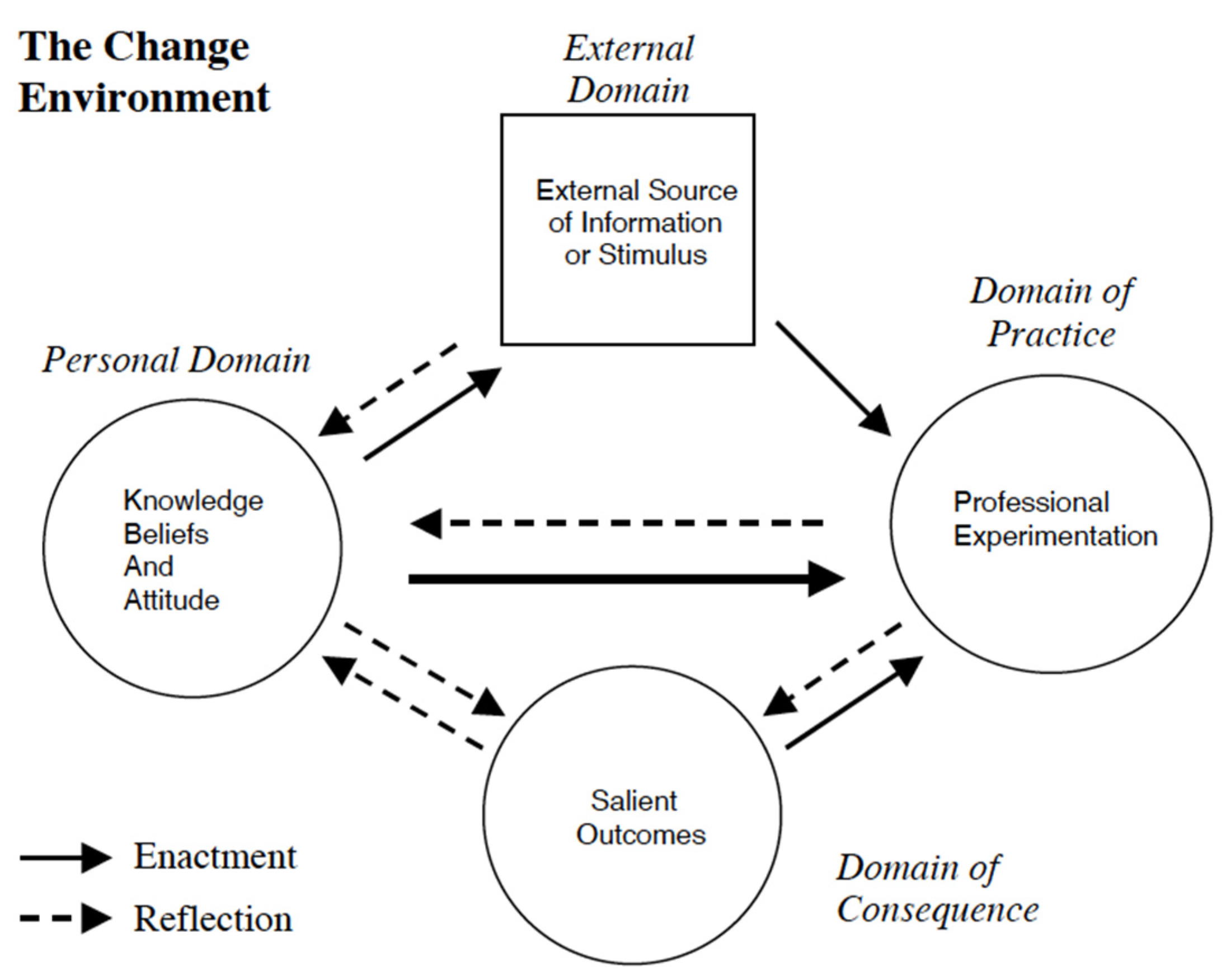
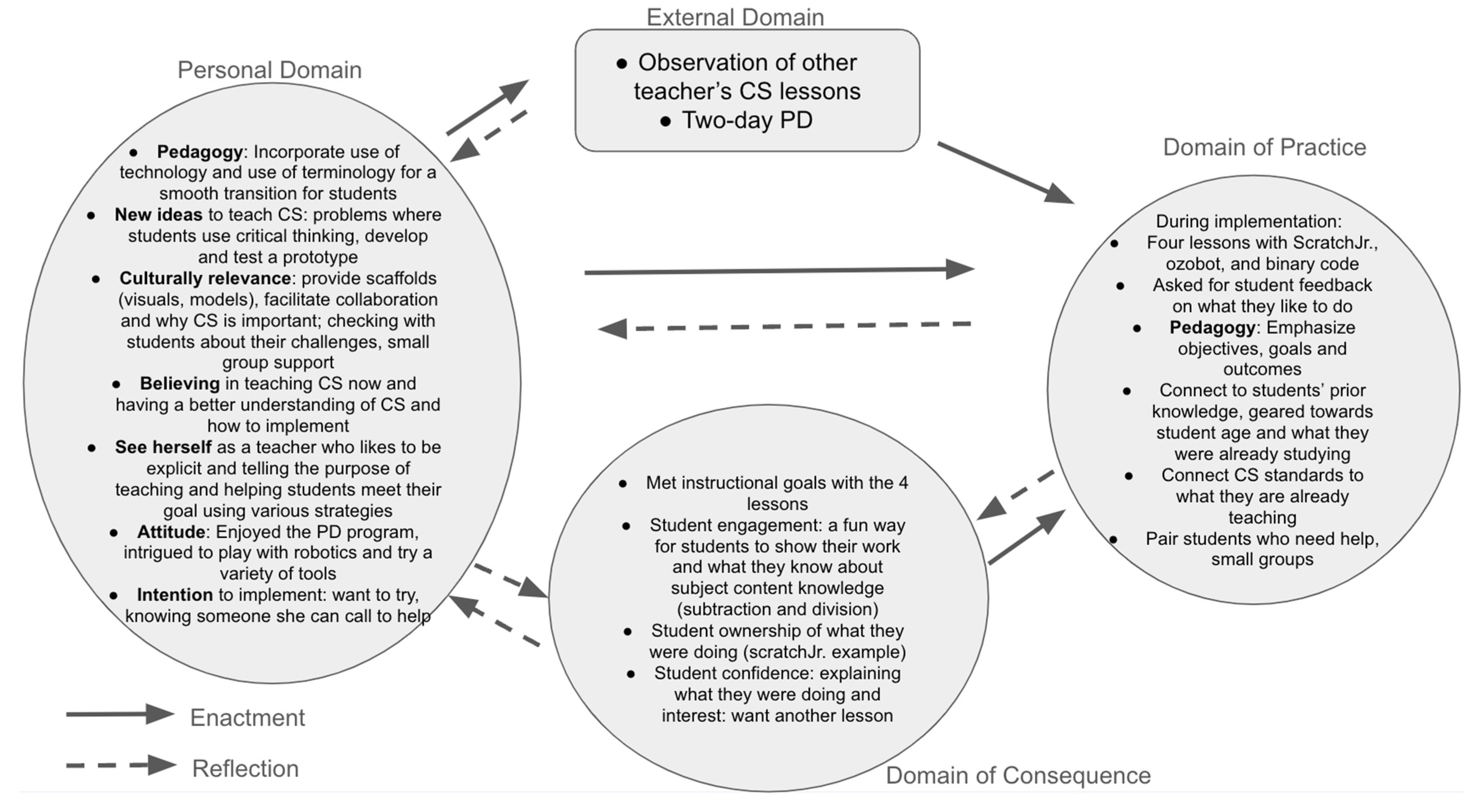
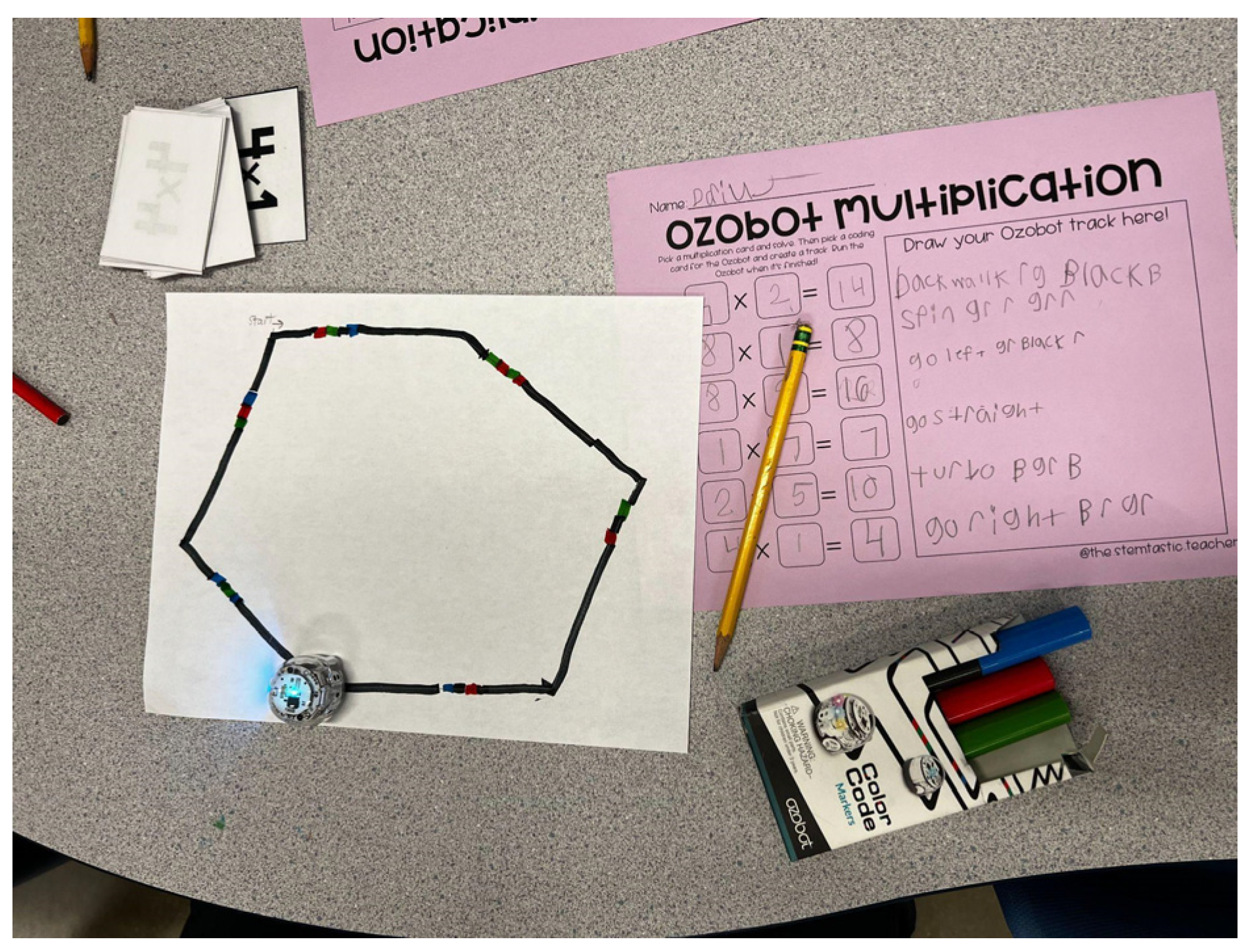
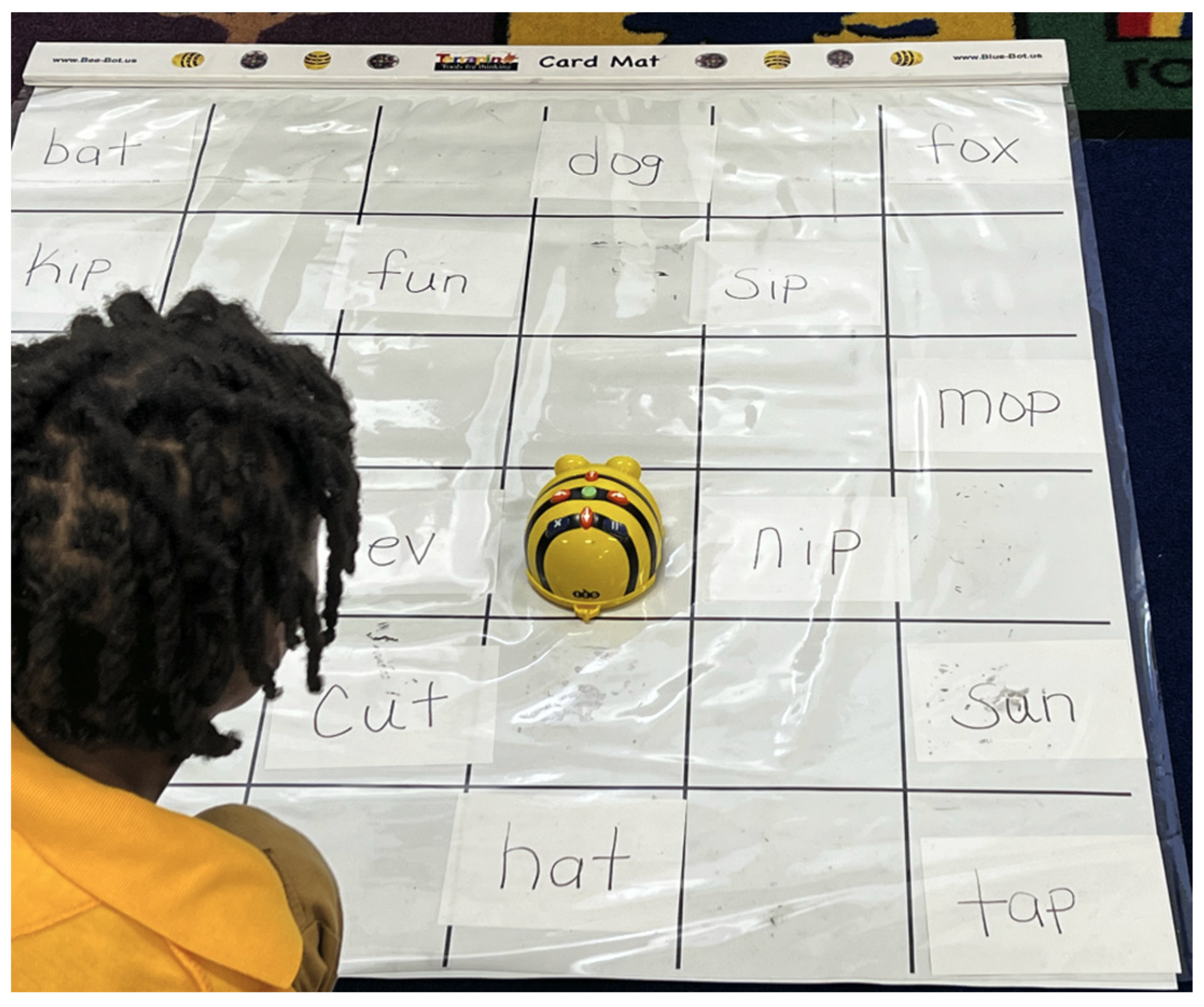



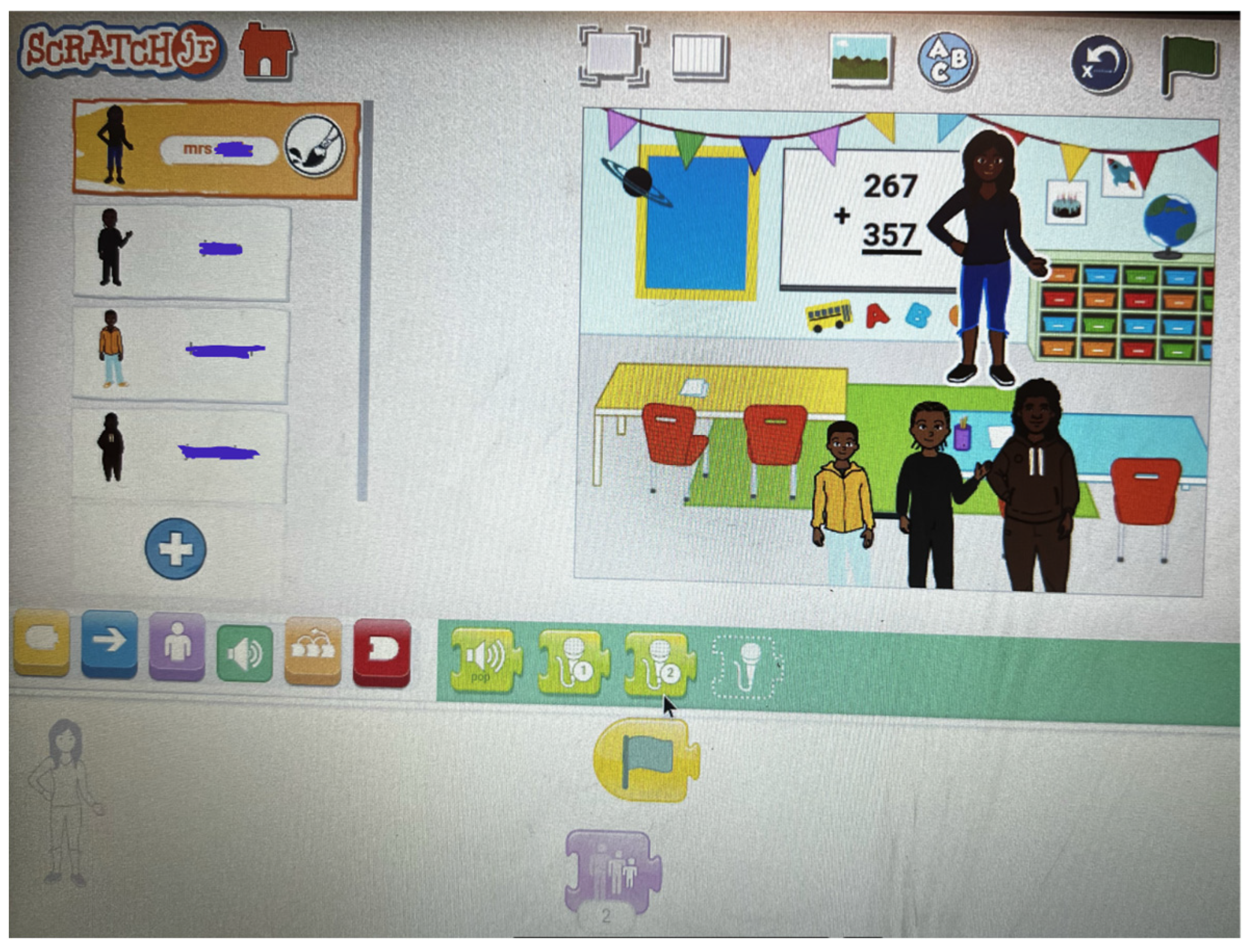
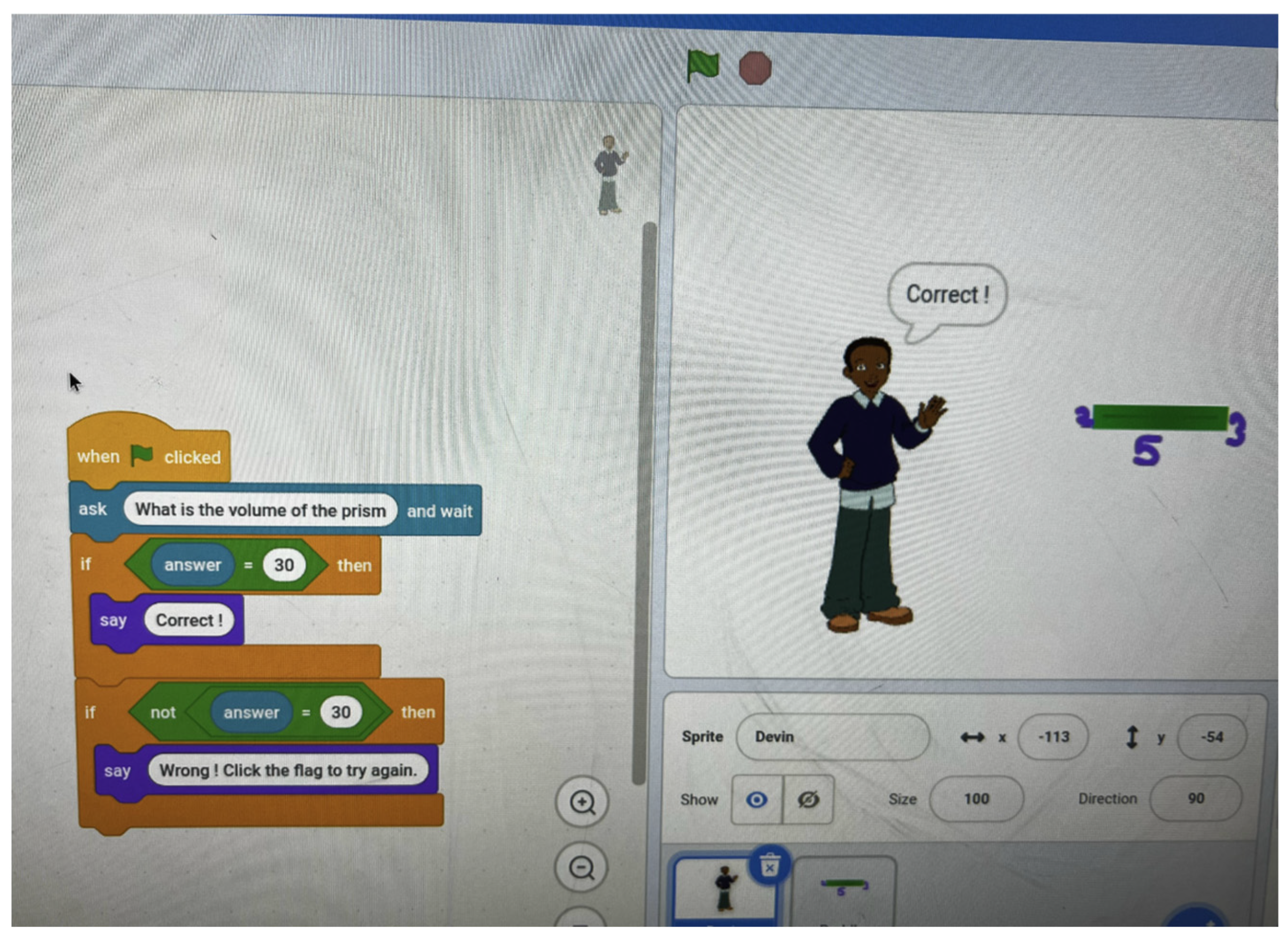
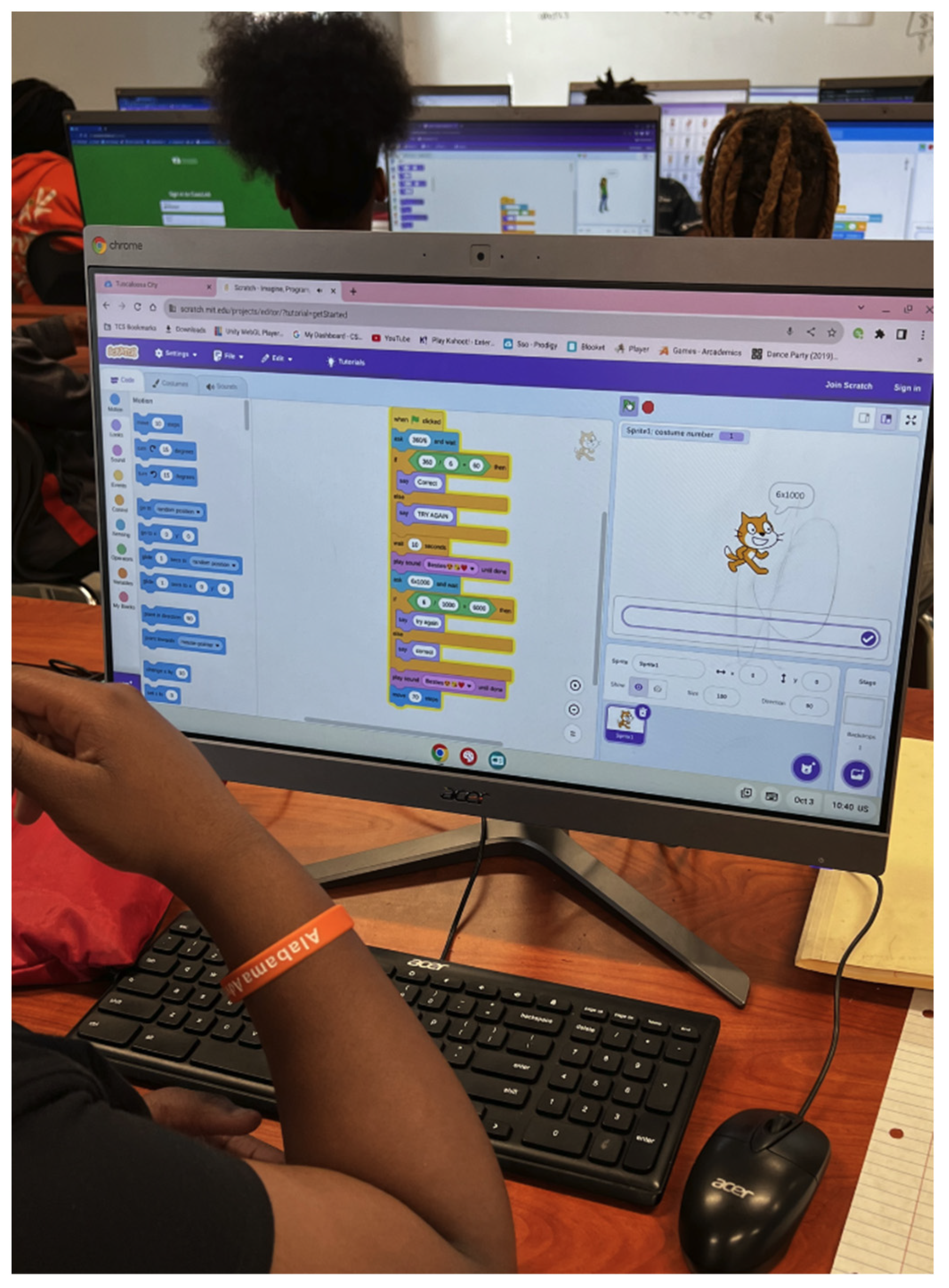
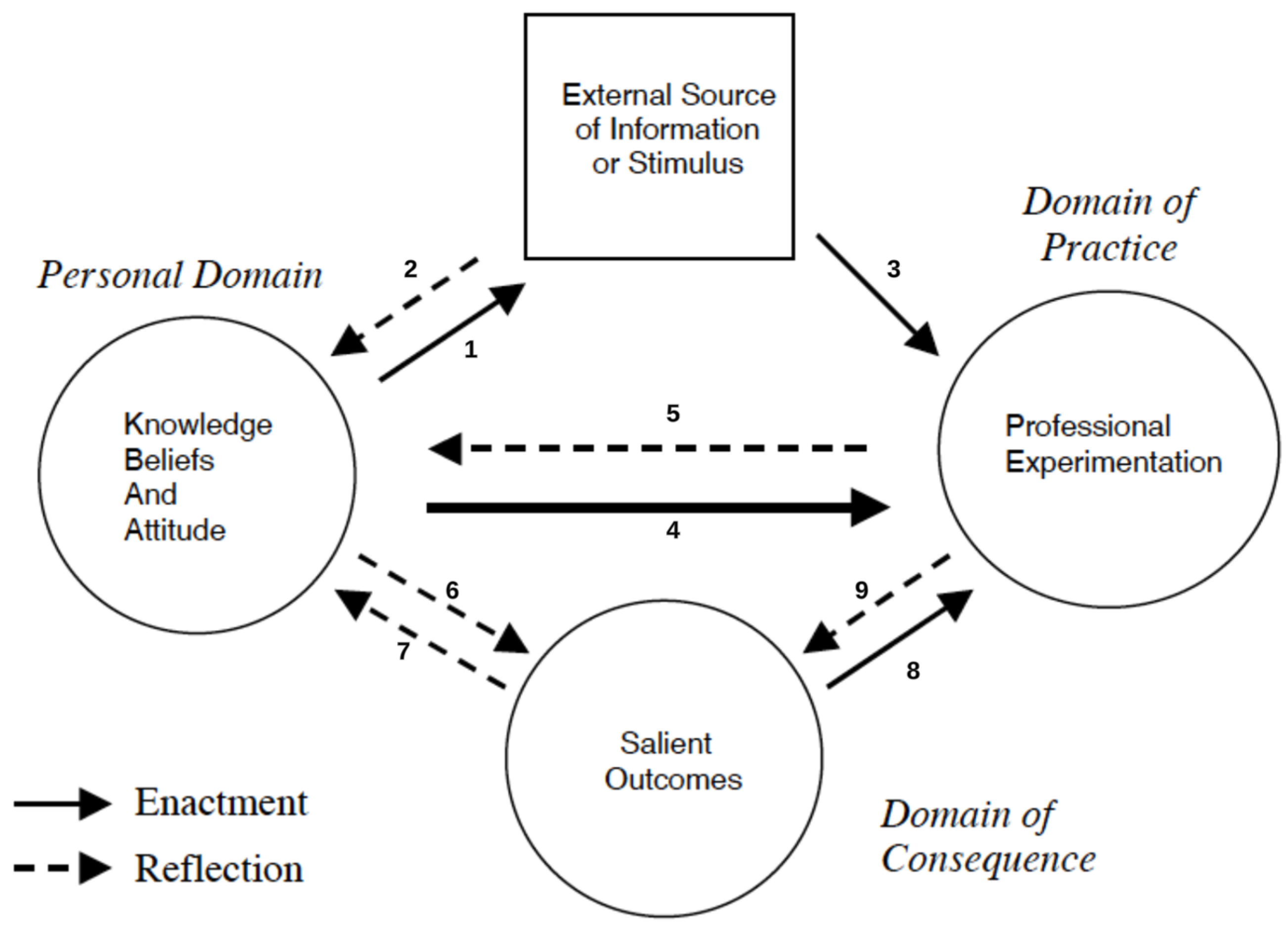
| Teacher Pseudonym | Grade Level | Years of Teaching Experiences | Number of Students in Class | Number of Black/African American Students (Observed) | Number of Hispanic/Latinx Students (Observed) |
|---|---|---|---|---|---|
| Williams | 1st | 22 | 17 | 13 | 4 |
| Johnson | 5th | 23 | 24 | 22 | 2 |
| Brown | 5th | 33 | 24 | 21 | 3 |
| Harris | 3rd | 17 | 15 | 15 | 0 |
| Smith | K | 5 | 19 | 16 | 3 |
| Jackson | 2nd | - | 14 | 13 | 1 |
Disclaimer/Publisher’s Note: The statements, opinions and data contained in all publications are solely those of the individual author(s) and contributor(s) and not of MDPI and/or the editor(s). MDPI and/or the editor(s) disclaim responsibility for any injury to people or property resulting from any ideas, methods, instructions or products referred to in the content. |
© 2025 by the authors. Licensee MDPI, Basel, Switzerland. This article is an open access article distributed under the terms and conditions of the Creative Commons Attribution (CC BY) license (https://creativecommons.org/licenses/by/4.0/).
Share and Cite
Luo, F.; Nasrin, F.; Awoyemi, I.D. Broadening Participation in Computing Through Cultivating Teacher Professional Growth: Stories from Teachers of Color. Educ. Sci. 2025, 15, 848. https://doi.org/10.3390/educsci15070848
Luo F, Nasrin F, Awoyemi ID. Broadening Participation in Computing Through Cultivating Teacher Professional Growth: Stories from Teachers of Color. Education Sciences. 2025; 15(7):848. https://doi.org/10.3390/educsci15070848
Chicago/Turabian StyleLuo, Feiya, Fatema Nasrin, and Idowu David Awoyemi. 2025. "Broadening Participation in Computing Through Cultivating Teacher Professional Growth: Stories from Teachers of Color" Education Sciences 15, no. 7: 848. https://doi.org/10.3390/educsci15070848
APA StyleLuo, F., Nasrin, F., & Awoyemi, I. D. (2025). Broadening Participation in Computing Through Cultivating Teacher Professional Growth: Stories from Teachers of Color. Education Sciences, 15(7), 848. https://doi.org/10.3390/educsci15070848






